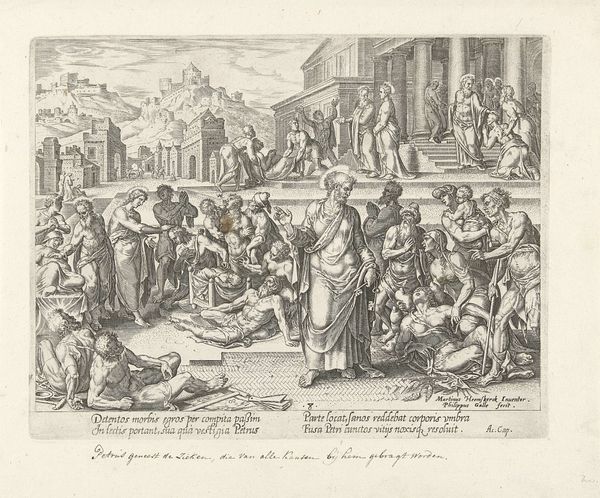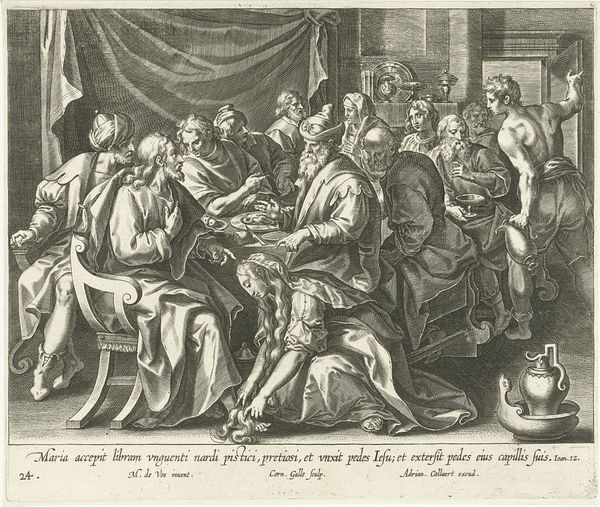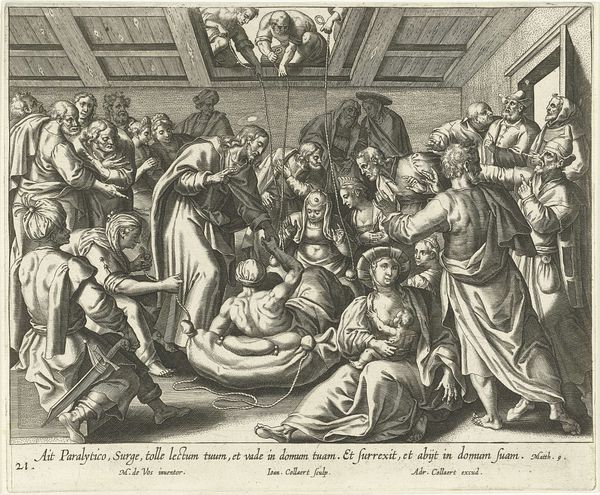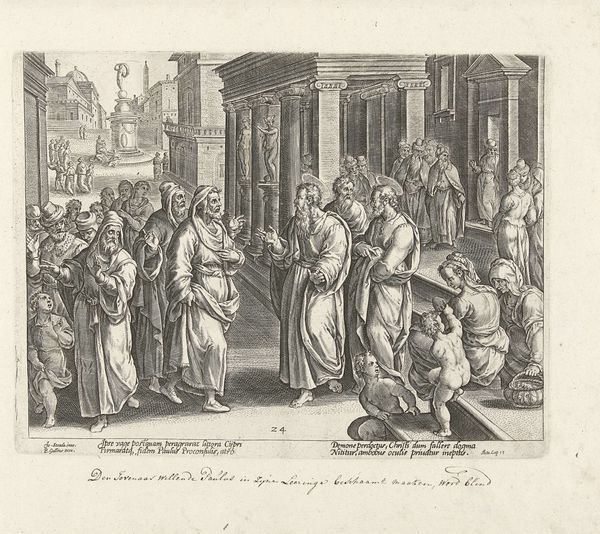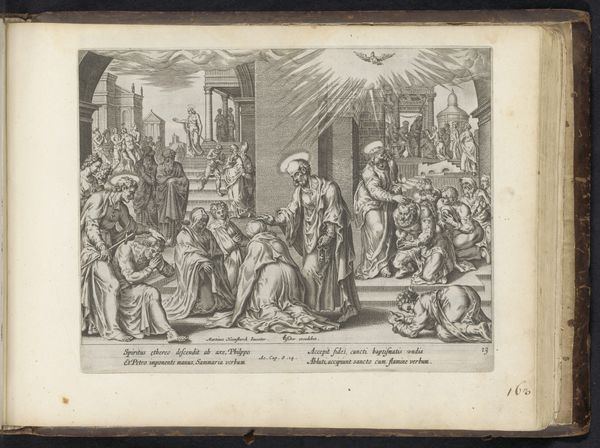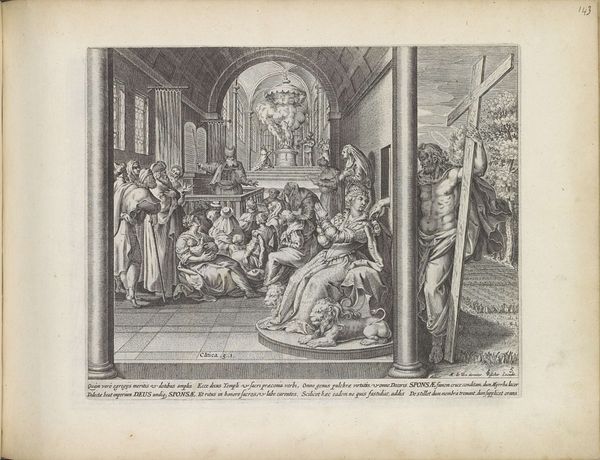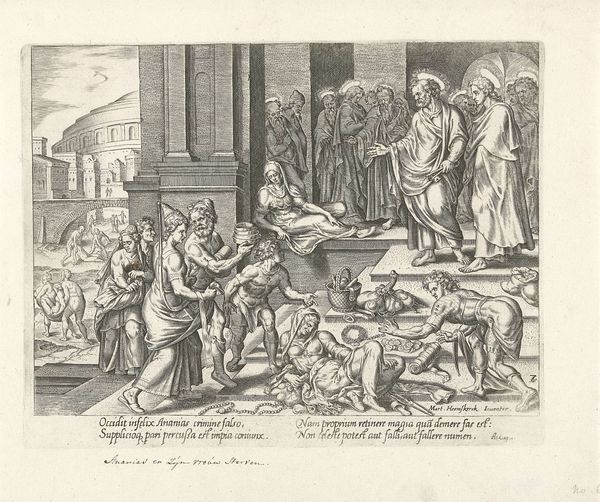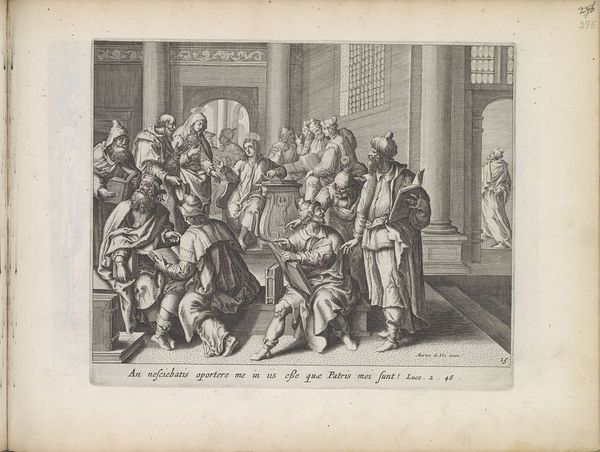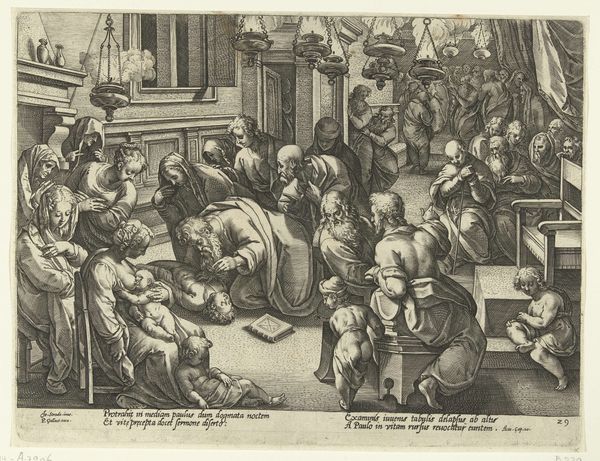
print, engraving
# print
#
figuration
#
line
#
history-painting
#
northern-renaissance
#
engraving
Dimensions: height 210 mm, width 272 mm
Copyright: Rijks Museum: Open Domain
This print, made by Philips Galle in the late 16th century, represents a pivotal moment of religious conversion in Samaria. Galle, as a printmaker, worked with copper plates and burins to create this image. It's a testament to the power of repeatable imagery in the early modern period. The lines you see are not simply drawn, but are deeply incised into the metal. Ink would have been applied to the plate, then wiped away, leaving ink only in the carved lines. This is a laborious process, and the result is a subtle, textured surface. Consider the social context of this print, and how images like this circulated widely, carrying religious and political ideas. The image could be reproduced ad infinitum in a print shop, representing a powerful and accessible method to spread stories. These techniques, though not 'high art', were critical to shaping public perception and disseminating new ideas. By appreciating the skill, labor, and means of production, we can understand how prints played a crucial role in shaping the world.
Comments
No comments
Be the first to comment and join the conversation on the ultimate creative platform.

